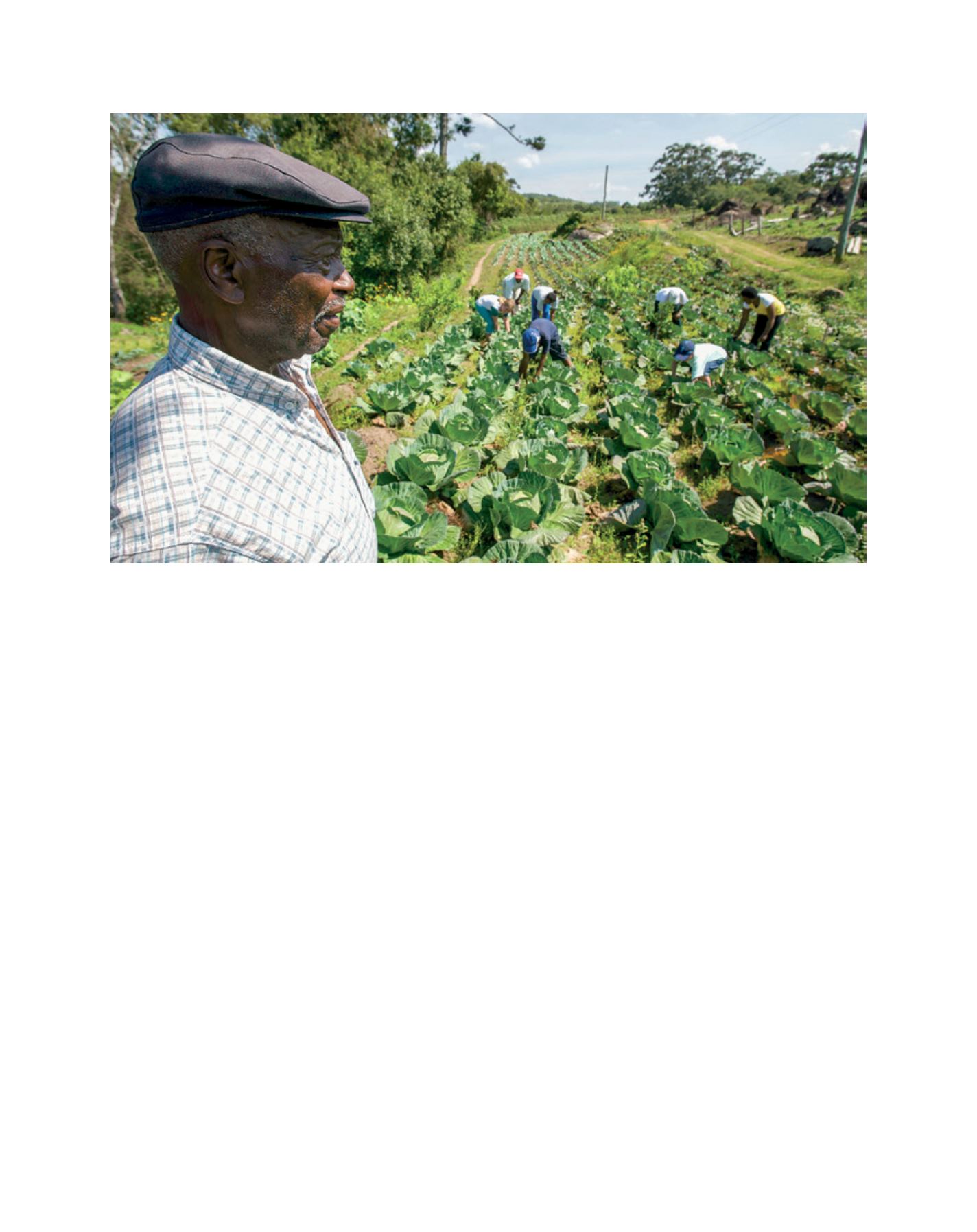

[
] 224
As most of the people facing food insecurity are family
farmers, especially rural women, raising their income levels
through economic and social policies increases food security.
The 52 per cent rise in Brazilian family farmers’ income over the
last decade was a determining factor in reducing the country’s
undernourished from 10.7 per cent in 2000-2002 to 1.7 per cent
of the population today. Family farmers produce 70 per cent of
the world’s food, the vast majority of them on a small propor-
tion of its agricultural land, so increasing their productivity and
land share results in increased and more evenly distributed food
output for farmers and consumers worldwide. In Brazil, and
increasingly in other parts of the world, social programmes for
food security and humanitarian assistance purchase products
from family farmers. Non-monetary food consumption, such
as that delivered by the free National School Meal Programme
(PNAE), is estimated to have reduced food insecurity in Brazil
by about one third.
Approximately three-quarters of the world’s 805 million
undernourished people live in rural areas – most of them
family farmers in developing countries. Rural women
are discriminated against in their access to land, natural
resources and public policies. This exclusion reveals why
70 per cent of the world’s undernourished people are
women, despite the fact that most women in developing
countries are family farmers and that rural women are
responsible for producing 60-80 per cent of food crops in
countries of the global south.
MDA’s Programme for the Productive Organization of
Rural Women aims to promote the economic empowerment
of women and strengthen their organizations by tailoring
the ministry’s entire set of policies towards their specific
needs and ensuring they are equally attended through
institutionalized quotas. Many rural women lack identity
documents, let alone land titles or bank accounts, and
the award-winning National Documentation Programme
for the Female Rural Worker has provided basic identity
documents to more than 1.2 million rural women in its 10
years of operation. Similarly, since 2003, all land acquired
through land reform and regularization programmes must
be jointly titled. As a result, almost half of all agrarian
reform settlers were women as of 2010, compared with 13
per cent in 2000.
Limited access to land is another severe constraint faced
by family farmers worldwide. Equitable access to land and
natural resources is key to the eradication of hunger and
poverty. Despite inheriting one of the world’s most concen-
trated land tenure structures, during the last 20 years Brazil’s
National Programme for Land Reform has settled 957,000
families on 88 million hectares of land. Additionally, in recent
years government actions directed at land reform settlers have
been consolidated, streamlining access to a series of credit
lines that range from initial settlement support to produc-
tive investment loans, and integrating these with policies that
provide basic social services such as access to running water,
energy, housing or transport infrastructure.
Another major instrument of Brazil’s food security strat-
egy lies in public procurement schemes such as the Food
Acquisition Programme (PAA), which purchases food from
family farmers and donates it to institutions serving vulner-
able populations or to furnish public food stocks. In 2012
Family farmers across the world are the main source of food, rural employment and income while constituting the majority of the extreme poor and hungry
Image: ASCOM MDA
D
eep
R
oots
















